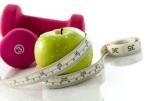Health Topics
-
Healthy Living
-
|
| |
| Get In the Zone with the Zone Diet |
| Dr E Suneetha |
 |
Sandra Bullock, Demi Moore, Sarah Jessica Parker and Jennifer Aniston might all be big in Hollywood, but their celebrity status isn’t the only thing they have in common. All these stars claim to have followed the Zone Diet to help them get - and keep - their famous figures. But just what does ‘Being in the Zone’ involve and more importantly, is it a healthy way to shift those pounds? |
‘Enter the Zone’ and you’ll lose weight permanently, achieve peak physical performance, enhance mental productivity and delay the signs of ageing. At least that’s what Barry Sears, creator of The Zone Diet, tells us!
In the mid 1990s, the Zone was all the rage with many celebs, including Jennifer Aniston and Brad Pitt, all claiming to be fans of the plan. Before long, millions of people were following the Zone and the diet had become a household name. Now, even though newer diet plans such as the Atkins and South Beach Diets gain more column inches, the Zone Diet continues to remain a popular choice for some. |
| |
| What’s the theory? |
| The Zone Diet works on the theory that excess insulin, a hormone that helps control our blood sugar levels, makes us fat and keeps us fat. By closely regulating our blood sugar levels, and therefore, keeping our levels of insulin in a tight ‘zone’, the body burns fat more efficiently so that we lose weight. To control blood sugar levels and consequently insulin levels, you need to get the perfect balance of carbohydrates, proteins and fats in every meal. Achieving this perfect balance effectively means following a low-carbohydrate, high protein diet that includes moderate amounts of fat. And if that sounds familiar, you’d be right! In fact, the Zone Diet is not too dissimilar to many of the other low-carb, high-protein diets that are currently in vogue, either in terms of the theory or the foods you can and can’t eat. |
| |
| What does the Zone Diet involve? |
If the theory sounds simple, the reality is far more complicated. First off, you’ll need plenty of patience, a head for science and the desire to learn more about ‘zoning’, either by looking at the Zone website or indulging in some bedtime reading, courtesy creator Barry Sears.
The idea is that to reach ‘The Zone’, every meal and snack should provide 40 percent of calories from carbohydrate, 30 percent from protein and 30 percent from fat. This is what some Zone fans call the 40:30:30 ratio.
To help with this, ‘Zone Food Blocks’ have been developed, where each ‘block’ contains a standardized amount of carbohydrate, protein or fat. To lose weight, a certain number of blocks are allocated for each meal and snack.
The number of Zone Food Blocks you should have each day is calculated according to your weight, height and waist and hip circumferences. Generally, the bigger you are, the more blocks you are allowed. For example, a woman who weighs 10st, is 5ft 2in, has a 28in waist and 37in hips should have 12 blocks a day (four for breakfast, three each for lunch and dinner, one for an afternoon snack and one for an evening snack). Meanwhile, a larger woman who weighs 12st, is 5ft 10in, has a 30in waist and 40in hips needs 14 blocks (four for each main meal and one each as an afternoon snack and an evening snack).
With help from Weight Loss Resources or the Zone’s website, Zone Perfect, calculating the daily number of blocks you should have - and how they should be divided throughout the day - is the easy bit. Creating meals and snacks that have the correct number of Zone Foods Blocks is the hard bit! No surprises then that you really need a Zone Diet book to help you put meals together. And if that’s still too much like hard work, there are many pre-packaged Zone Diet meals and snacks for delivery that you can order over the Internet - at a fairly hefty price! |
| |
|
|
| |
|